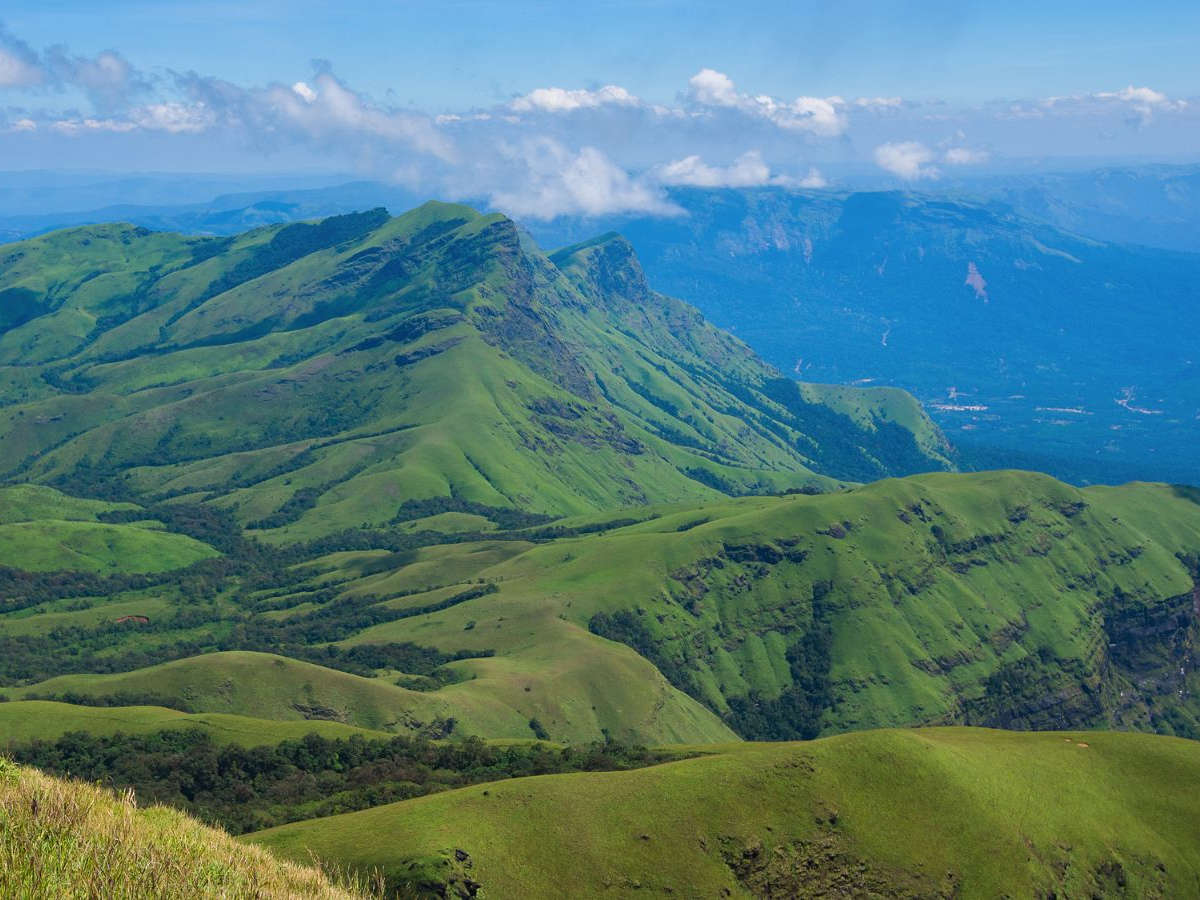Into the Wild Greens: Kudremukh Trekking for Nature Enthusiasts


Tucked away in the heart of Karnataka's Western Ghats, Kudremukh stands as a breathtaking testament to nature’s grandeur. Named after its distinctive “horse-face” peak, this lush expanse draws in trekking aficionados and eco-lovers alike. Kudremukh isn’t just a destination; it's an experience that embodies raw wilderness, biodiversity, and a serene escape from urban life.
A Natural Treasure in the Western Ghats
Kudremukh, located in the Chikkamagaluru district, is part of the Kudremukh National Park—one of the largest protected forest regions in the Western Ghats. Declared a UNESCO World Heritage Site due to its rich biodiversity and ecological significance, the area is teeming with evergreen forests, cascading waterfalls, and thriving wildlife. Its elevation, which reaches approximately 1,894 meters (6,214 feet), offers panoramic views and a climate that remains pleasant throughout the year, making it an ideal spot for trekking and nature walks.
The Trekking Trail: A Journey Through Verdant Valleys
The Kudremukh trek stretches over 18 kilometers (to and fro), typically starting from the small village of Mullodi. While the trail is categorized as moderate in difficulty, the journey rewards adventurers with unmatched scenery—rolling meadows, shola forests, and high-altitude grasslands that change hues with the seasons.
What sets Kudremukh apart is the seamless blend of terrain. Trekkers cross flowing streams, narrow forest paths, and open plains that are often blanketed with mist during early mornings. The path leads to the iconic horse-face peak, where a vantage point offers an arresting 360-degree view of undulating hills and valleys.
Best Time to Visit
While Kudremukh welcomes visitors year-round, the months between October and February are widely regarded as ideal. During this window, the post-monsoon landscape is lush, and the skies remain clear, providing optimal conditions for photography, trekking, and birdwatching.
That said, monsoon lovers might be tempted to visit between June and September. Though the trail becomes slippery and more challenging, the forest dons its most vibrant shades during this time. However, trekkers must check with local forest authorities, as permissions are often restricted during heavy rains for safety reasons.
Biodiversity and Conservation
Kudremukh is more than a trekking hotspot—it’s an ecological sanctuary. The region is home to over 200 species of birds, including the Malabar Whistling Thrush, Great Hornbill, and Nilgiri Wood Pigeon. Large mammals such as tigers, leopards, and Indian gaur also inhabit the deeper forest zones, though sightings are rare along the trekking trail.
Botanically, the park features a mix of tropical evergreen and semi-evergreen forests. These areas act as critical catchment zones for rivers like the Tunga, Bhadra, and Nethravathi. Conservation efforts led by the Karnataka Forest Department, in collaboration with environmental NGOs, have significantly contributed to preserving this delicate ecosystem.
Permissions and Guidelines
Since Kudremukh falls under a protected area, trekkers must obtain a permit from the Forest Department at the Kudremukh Forest Office. Entry is capped daily to prevent environmental degradation. Visitors are also required to hire a licensed local guide—a rule aimed at both ensuring safety and promoting local livelihoods.
Some key guidelines include:
No plastic: Visitors must avoid carrying single-use plastics.
Timings: Trekking is only permitted between sunrise and sunset.
Group size: Limited to reduce impact and maintain trail quality.
How to Reach Kudremukh
By Air: The nearest airport is Mangalore International Airport (approximately 100 km away). From there, one can hire a cab or take a local bus to Kalasa or Kudremukh town.
By Train: Mangalore Junction is the closest major railway station. Regular trains connect Mangalore to cities like Bangalore, Mysore, and Mumbai.
By Road: Kudremukh is accessible via well-maintained roads. Many travelers prefer driving down from Bangalore (around 330 km) or Chikkamagaluru (95 km), enjoying the scenic countryside en route.
Where to Stay
While accommodation options within the national park are limited due to conservation regulations, several homestays and eco-lodges in nearby villages like Mullodi, Kalasa, and Samse provide cozy, authentic stays. Many are run by local families who offer home-cooked meals and insightful stories about the region's culture and flora.
Responsible Trekking: A Shared Responsibility
For those drawn to Kudremukh’s tranquil embrace, it is essential to tread lightly. The region is not just a scenic locale—it is a living, breathing ecosystem. Responsible travel practices such as leaving no trace, respecting wildlife, and supporting local communities ensure that this natural haven remains pristine for future generations.
Final Thoughts
Whether you're a seasoned trekker or a nature enthusiast seeking rejuvenation, Kudremukh offers an immersive experience unlike any other. Its expansive meadows, serene silence, and thriving biodiversity create the perfect backdrop for both adventure and introspection. With mindful preparation and respect for nature, Kudremukh has the power to leave an imprint on the soul, long after the trek is over.
Leave a comment